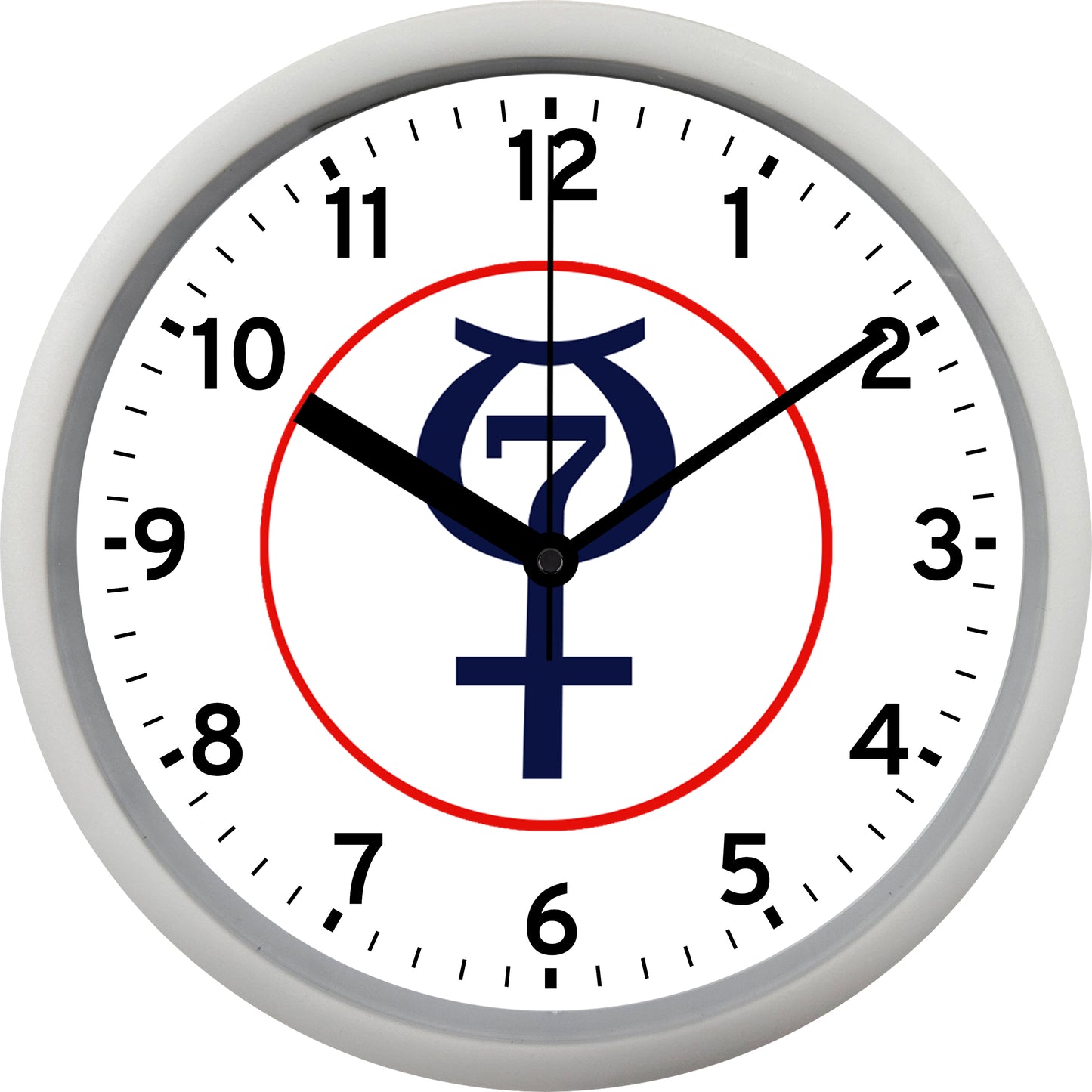Mainstays
NASA Project Mercury Wall Clock
NASA Project Mercury Wall Clock
Item Number/SKU:
SKU:NASA-04-WH
Couldn't load pickup availability
NASA "National Aeronautics Space & Administration" Project Mercury Wall Clock
Original Mercury 7 Astronaut - USN LCDR Alan Bartlett Shepard, Jr., USAF Capt Virgil Ivan "Gus" Grissom, USMC Maj John Herschel Glenn, Jr., USN LT Malcolm Scott Carpenter, USN LCDR Walter Marty "Wally" Schirra, Jr., USAF Capt Leroy Gordon "Gordo" Cooper, Jr., & USAF Maj Donald Kent "Deke" Slayton
USAF Maj Donald Kent "Deke" Slayton was grounded in 1962 and did not fly in the Mercury Program
Mercury-Redstone 3 - Freedom 7 - Flight Crew - USN LCDR Alan Bartlett Shepard, Jr.
Mercury-Redstone 4 - Liberty Bell 7 - Flight Crew - USAF Capt Virgil Ivan "Gus" Grissom
Mercury-Atlas 6 - Friendship 7 - Flight Crew - USMC Maj John Herschel Glenn, Jr.
Mercury-Atlas 7 - Aurora 7 - Flight Crew - USN LT Malcolm Scott Carpenter
Mercury-Atlas 8 - Sigma 7 - Flight Crew - USN LCDR Walter Marty "Wally" Schirra, Jr.
Mercury-Atlas 9 - Faith 7 - Flight Crew - USAF Capt Leroy Gordon "Gordo" Cooper, Jr.
Project Mercury - 1959-1963:
Shortly after the Space Race began, an early objective was to get a person into Earth orbit as soon as possible, therefore the simplest spacecraft that could be launched by existing rockets was favored. The US Air Force's Man in Space Soonest program considered many manned spacecraft designs, ranging from rocket planes like the X-15, to small ballistic space capsules. By 1958, the space plane concepts were eliminated in favor of the ballistic capsule.
When NASA was created that same year, the Air Force program was transferred to it and renamed Project Mercury. The first seven astronauts were selected among candidates from the Navy, Air Force and Marine test pilot programs. On May 5, 1961, astronaut Alan Shepard became the first American in space aboard Freedom 7, launched by a Redstone booster on a 15-minute ballistic (suborbital) flight. John Glenn became the first American to be launched into orbit by an Atlas launch vehicle on February 20, 1962, aboard Friendship 7. Glenn completed three orbits, after which three more orbital flights were made, culminating in L. Gordon Cooper's 22-orbit flight Faith 7, May 15–16, 1963.
The Soviet Union (USSR) competed with its own single-pilot spacecraft, Vostok. They sent the first man in space, by launching cosmonaut Yuri Gagarin into a single Earth orbit aboard Vostok 1 in April 1961, one month before Shepard's flight. In August 1962, they achieved an almost four-day record flight with Andriyan Nikolayev aboard Vostok 3, and also conducted a concurrent Vostok 4 mission carrying Pavel Popovich.
Mercury-Redstone 3 - Freedom 7 - Flight Crew -


